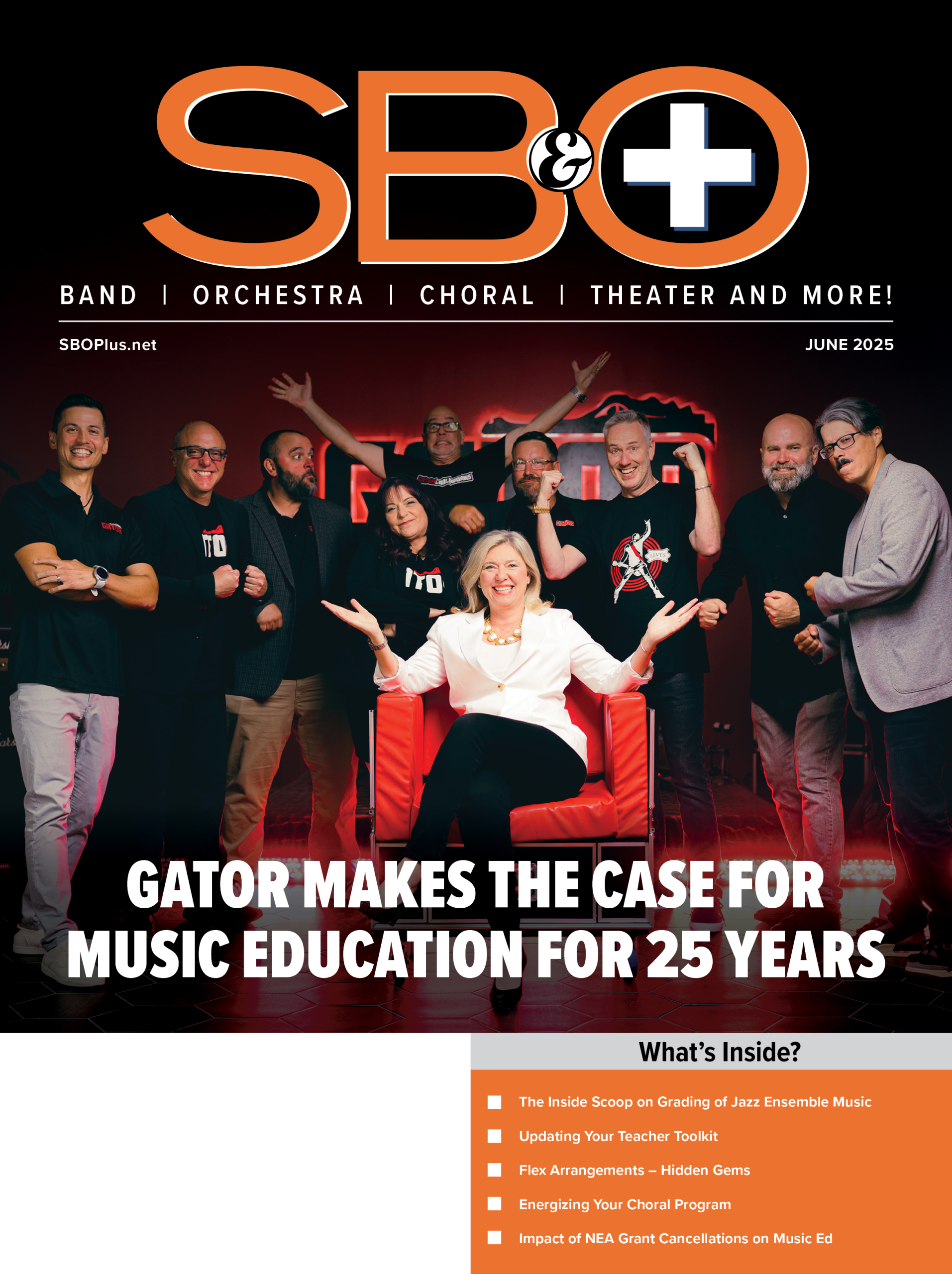The ear can be thought of as a muscle and, to a certain degree, it must be trained like one. Unfortunately, far too many instructors leave ear training skills locked up in a classroom book. The ear must be a central part of every music class whether it is a Concert Band, Orchestra, Music Theory, History, or Appreciation class. In performance situations, ear training will lead to better intonation, ensemble playing, and overall musicianship. With that in mind, here are three great ways to dramatically improve your students’ ears and, hopefully, their overall playing.
Prior to tackling these three exercises, students must be familiar with the underlying scales and moveable “Do” solfege. If students are not familiar with moveable “Do” solfege, or cannot play these scales on their instruments, you have your work cut out for you! If your students are already way past that point, read on. These exercises can be modified for even the most advanced students and will serve them well for years to come.




Crazy for Chromatics
Once students have a solid understanding of moveable “Do,” it is essential that they learn to sing a chromatic scale. When singing through the chromatic scale, remember to use sharps when ascending and flats when descending. (See Example 1) Begin by accompanying students at the piano or by picking specific sections to sing while other sections play. Don’t be afraid to change to a higher or lower octave when necessary. This exercise is not intended to make your students better singers; it is designed to improve their ears. For young musicians, octave displacement is an important skill to master and should be encouraged whenever possible. After students have mastered the exercise and solfege syllables, slowly remove the piano or ensemble accompaniment, and spot check specific tones as needed.
Target Tones
Target tones are an essential part of any ear training regimen. They force students to hear not only chord tones, but surrounding tones as well. Through my own teaching experience, I have found that while many students can correctly sing a major scale, they often have difficulty, picking out specific intervals at random. As an analogy, try thinking of the letter of the alphabet that directly precedes the letter “O.” Most people are unable to provide the answer without silently singing or thinking of the letters “L-M-N.” With practice, this habit can be broken. With respect to the scales and scale degrees, the best way to practice this is through the use of target tones. Here are two of my favorite target tone exercises along with instructions on how to complete each exercise in the classroom.
This first target tone exercise still uses the crutch of the scale but forces students to hear each scale degree without counting up from “Do.” I like to call this the “Leap Frog” exercise and it tends to produce great results in very little time. (See Example 2a)
Start by having students sing the solfege with piano or sectional accompaniment. Play the exercise in all twelve keys using octave displacement when appropriate. If using sectionals, this can be a good time to not only train students’ ears, but also to find out who hasn’t been practicing their scales!
After getting comfortable with the exercise, slowly remove the piano or ensemble accompaniment until the students are able to sing the entire exercise a cappella.
The final step in mastering this exercise is perhaps the most difficult. First, play middle C and have the students sing through the exercise without the piano. When finished, have the students sing C# as the new “Do” and check their pitch with the piano. If they’ve practiced the chromatic scale exercise, this should be easy.
Once your students are able to master the major scale, try introducing minor scales or modes as dictated by the ensembles current repertoire. Example 2b displays a version of the Leap Frog exercise that utilizes a Natural Minor Scale. This exercise is endlessly adaptable and should be used whenever introducing a new scale or mode.
The second target tone exercise removes the scale entirely. This is useful in a number of ways. First, it requires the students to hear each interval without the comfort of the scale. Second, it’s a great way to introduce harmonic concepts such as leading tones or even simple triads. As with the first two exercises, begin with piano or ensemble accompaniment and slowly work towards students singing a cappella. Example 3a displays target tones used within the context of a major scale while Example 3b utilizes a natural minor scale.
Drill, Baby, Drill!
Ear training is one area that is all too often pigeon-holed into a single course or classroom experience. To create a successful music program, teachers must strive to involve the ear in every aspect of the students’ coursework. These exercises are not meant to be run through only once a semester. Instead, they should be continuously practiced and drilled until they are thoroughly absorbed by the students. After obtaining complete control over these three simple exercises, students should be encouraged to expand upon them as their understanding of scales and modes continues to grow. The beauty of each of these exercises is the fact that the only material needed to practice each exercise is a pitchfork or metronome with A440. As an undergraduate, I carried a pitchfork with me and practiced these exercises on the subway while commuting to class. All three exercises will provide students with a solid foundation for further ear training studies and will improve their overall playing, intonation, musicianship, and sectional playing. All in all, it’s a recipe for success.


























